Wildscreen Festival 2018
During this amazing year that I’m having, I’ve realized that learning and getting inspiration from others is a vital step to let creativity fly and start viewing things from others point of view. Whatever you want to collect, either a picture or a video, it is of great help to have built previously in your head how do you want to frame that subject, from which perspective you want to capture it, with which light, etc. And for that it is necessary to have seen others people work, to get ideas, learn techniques and explore others tastes.
That is why I thought it would be a great idea to attend one of the most important events in wild-life and natural history film-making and photography: the Wild Screen Festival in Bristol, the capital were the BBC studios are located.

During this one-week event, I had the awesome opportunity to attend talks and workshops from professional wildlife filmmakers and photographers, video editors, storytellers and editors of amazing journals such as National Geographic! One of the things I found most useful was the storytelling side of it. People may think that to create a documentary it’s only important to get nice images and clips. However, knowing how to construct all the parts to communicate something, how to make it interesting and authentic, is a fundamental skill that sometimes might be forgotten. For that, some well renowned photojournalists came to expose their work, showing examples and documentaries they created and giving their comments and responding our intrigued questions on how to get better in our filming/photography skills.
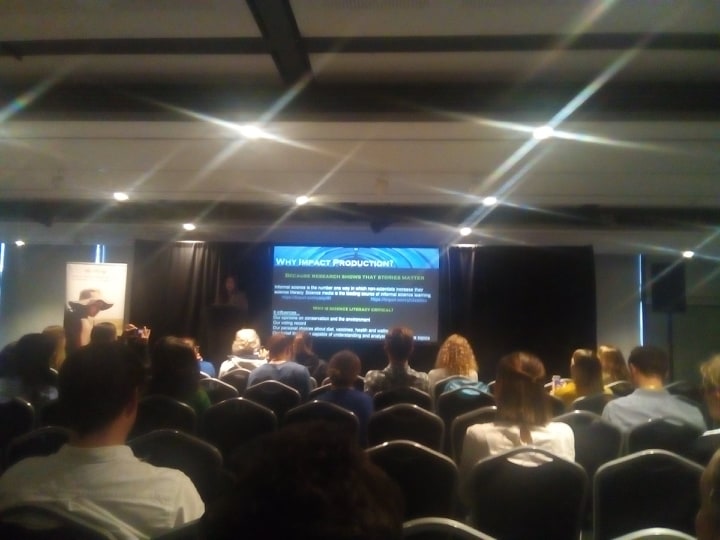
At this event I had the chance to meet with three ex-scholars of the OWUSS family: Danny Copeland 2015 European ROLEX scholar and Yolly Bosiger 2012 Austalasian ROLEX scholar and Jeff Hester 2013 North American ROLEX scholar. They all work now in media, either for natural history filmmaking or for conservation projects. It was an awesome opportunity for me to ask them lots of questions about media production and they shared with me personal stories that inspired me to try to capture the passion that I feel for the oceans and how to transmit that feeling to the public.
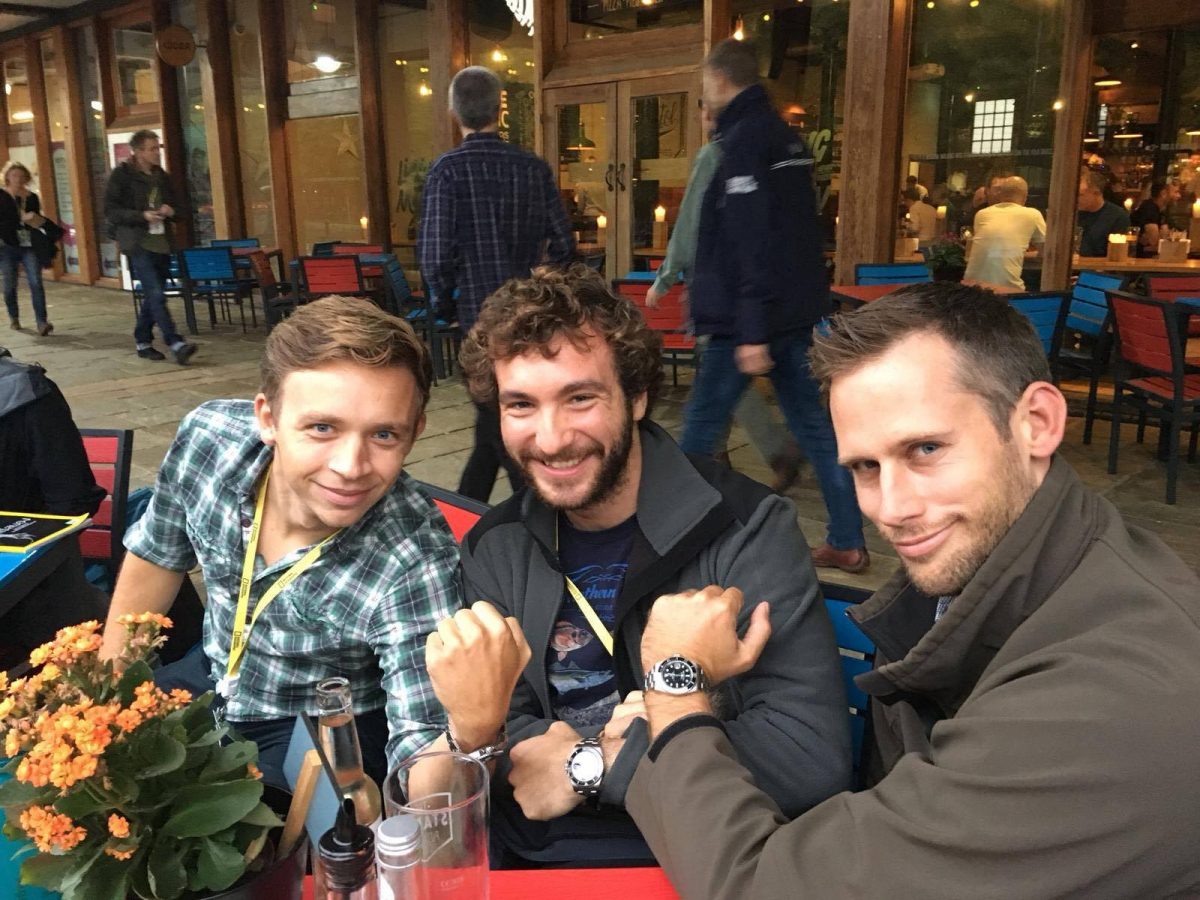
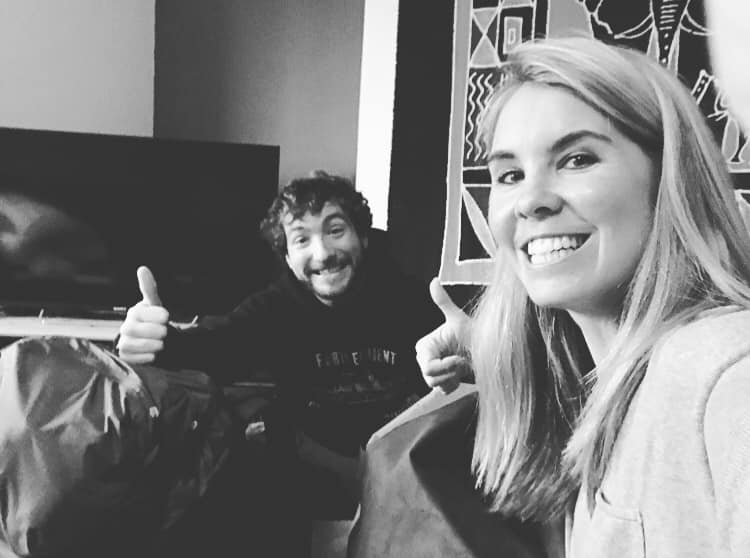
TDI Advanced Nitrox and Helitrox with Mark Powell
After Bristol, I joined Mark Powell, an instructor of diving decompression and wreck diving, to do a TDI Advanced Nitrox and Helitrox course together with the instructor in training Simon K Jones in Vobster Quay and Chepstow. This was the first time that I was introducing myself to the world of decompression diving and it was surprising to see how my whole perspective to diving changed after this training. Planning the dive according to the gas mix and the diving profile was a fundamental skill to learn, but more importantly was to be able to react and change plans when something was not going according to plan. A bit too deep, a bit too long, and you had to change the whole plan. But when many things are happening at the same time underwater at 40m things get tricky and mistakes are easy to occur. However, with Mark and Simon I got used to problem-solving while being sometimes a bit task loaded and now, I feel more comfortable in deeper waters. I couldn’t have asked for better mentors to take me to depth than Mark and Simon.

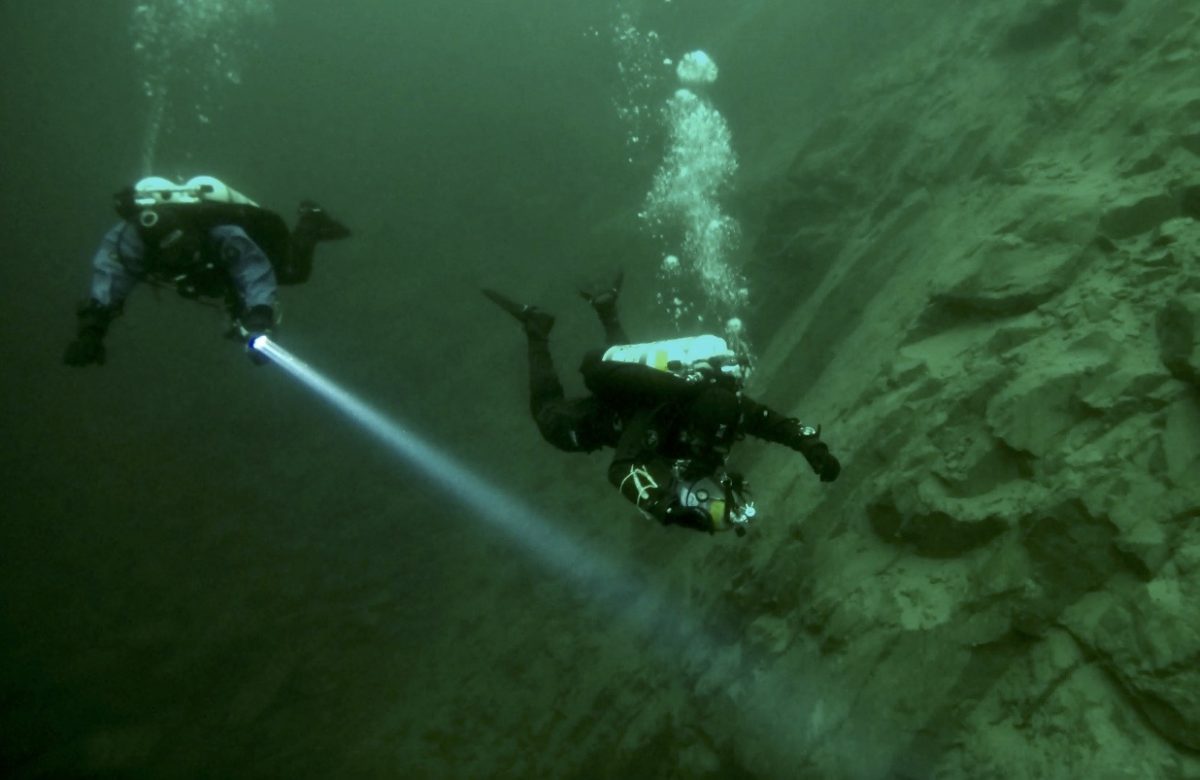


UK Birmingham DiveShow 2018
Followed by the TDI course I travelled to Birmingham to attend the UK Dive Show that was taking place there, where I had the chance to give a talk together with my European scholar brother and sister, Danny Copeland and Mae Dorricott, the last European ROLEX scholar. We shared our experiences with the public and encourage the young audience to apply for our amazing scholarship opportunity for the next year 2019. It was very exciting to share our personal stories to people and try to inspire people to explore and know more about the oceans.

At the dive show I also had the pleasure to help out at the Fourth Element stand with the fourth element family! Fourth Element have provided me for this year the amazing dry suit Argonaut 2.0. Having chosen to base most of my experiences for the year on cold water diving it would have been very hard without a super nice suit as this one! This was a great experience to meet people on the diving industry and also to get to know what were the last innovations in products for diving gear!

Raid Sidemount course with Garry Dallas
At the DiveShow I met with the well renowned cave and sidemount instructor Garry Dallas (Simply Sidemount). Garry offered me to introduce me to the amazing world of sidemount diving. During the scholarship, I have told myself that I want to experience as many diving techniques and learn as many skills as possible so that afterwards I have the tools to apply diving to a wide array of fields in underwater research. And sidemount really offers great potential. It’s light, feels comfortable, effortless. With Garry I learned how to really hover while diving, keeping a totally stationary position above the bottom in order to be able to focus all my efforts in other aspects of the dive and to perform the skills to safely dive with sidemount. It really was a great surprise to pass from twinset to this simple setting and it is definitely a technique that I will be applying in the future.
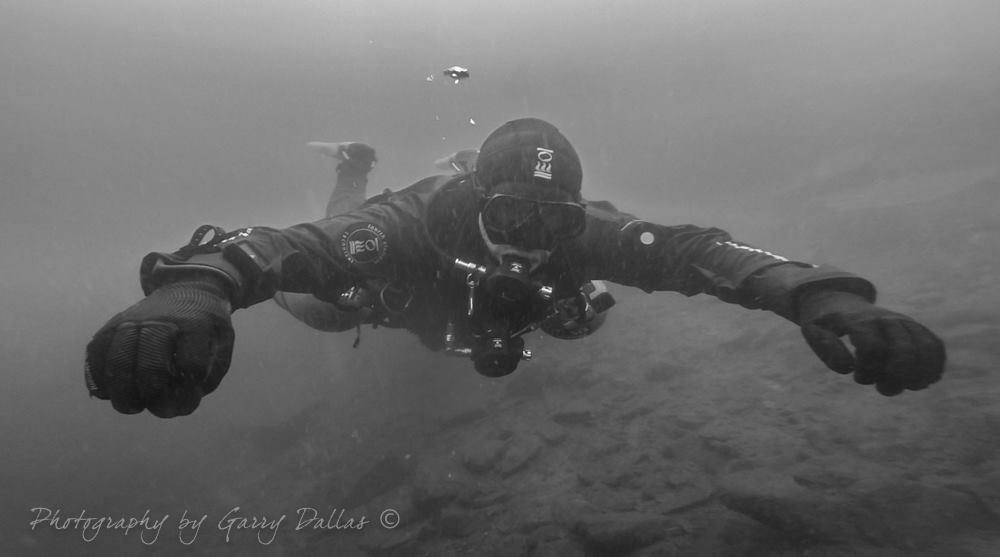
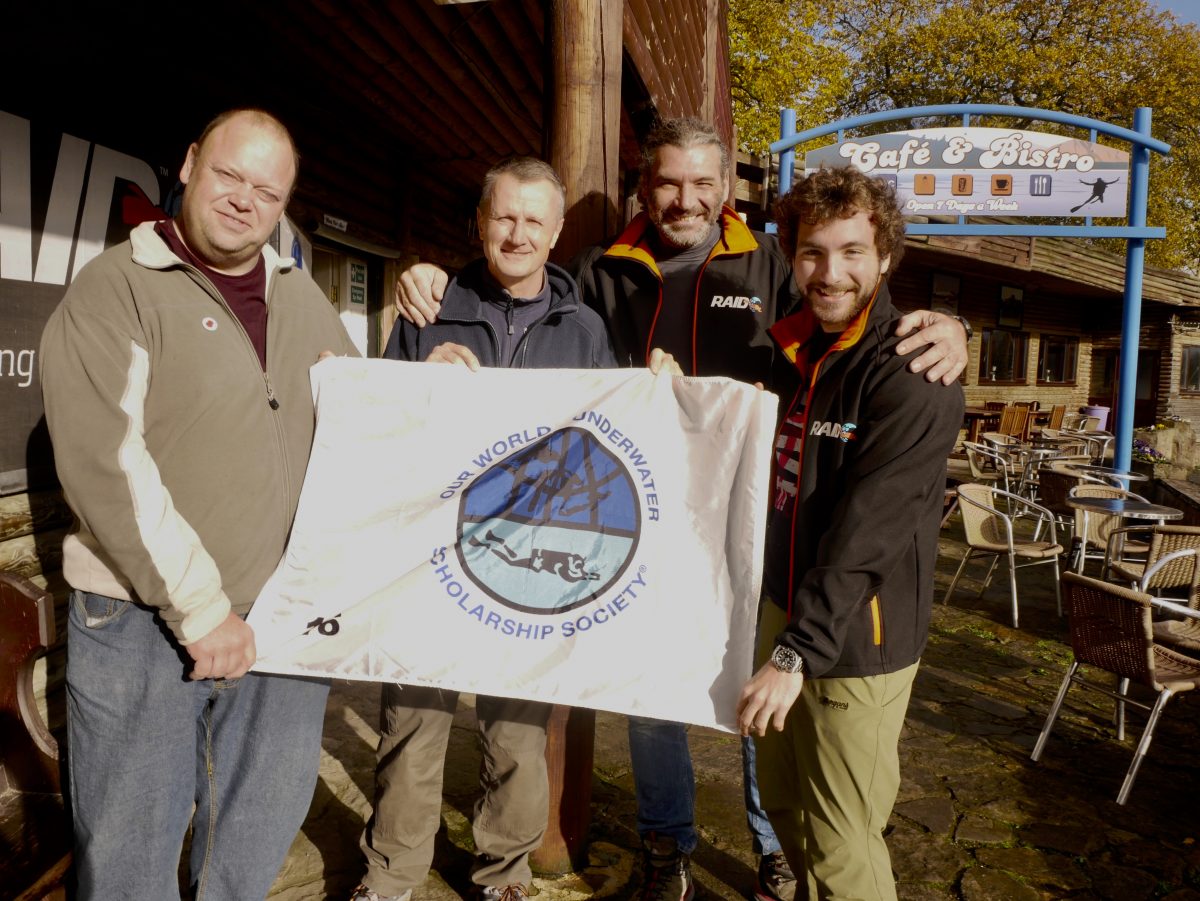


Visiting APEKS and learning how to maintain my regulators
After my sidemount course with Garry I got invited by Dean Martin to their APEKS factory in Birmingham, together with Mae Dorricott. APEKS is one of our generous sponsors that have provided me with their cutting-edge cold-water regulators MTX-R, the super light backplate, WTX-D30 wing and the cool bright orange RK3 fins, together with many other diving accessories! In APEKS, Dean gave Mae and me a fantastic tour where we got to see first hand how they build-up all the teeny tiny pieces that configure the amazing kit that allows us to breath underwater and we got to learn and know many curious facts about the amazing technology that it is involved in the development of their diving products. After the tour, Chris, one of the APEKS technicians, gave Mae and me an extremely useful introduction on how to take apart and maintain the regulators that we take sometimes to really remote and harsh environments. That was going to become handy on my coming adventure!
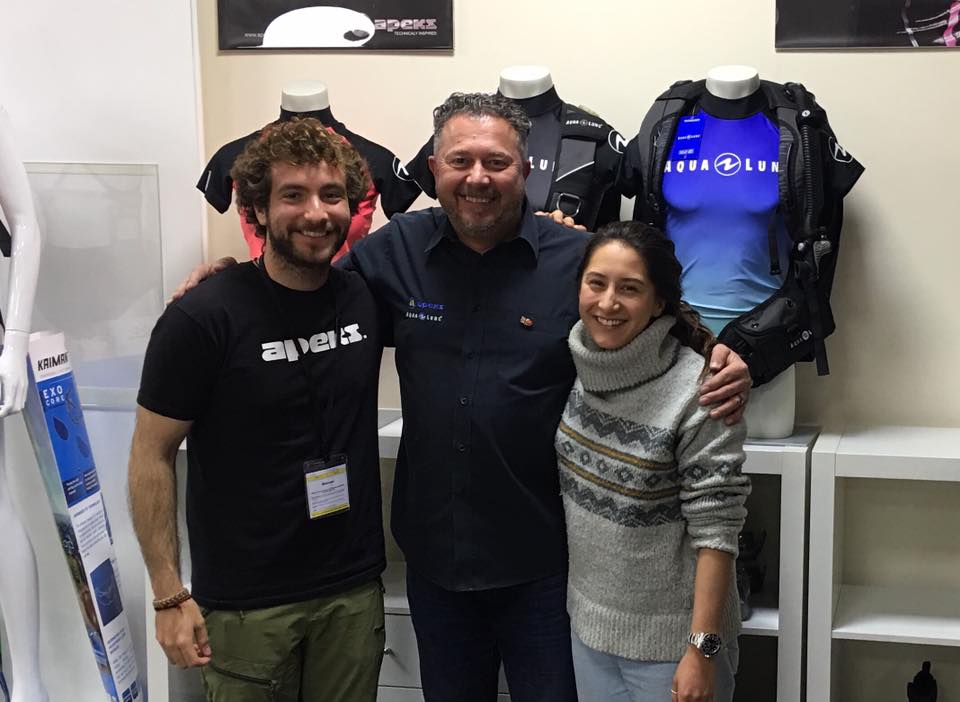
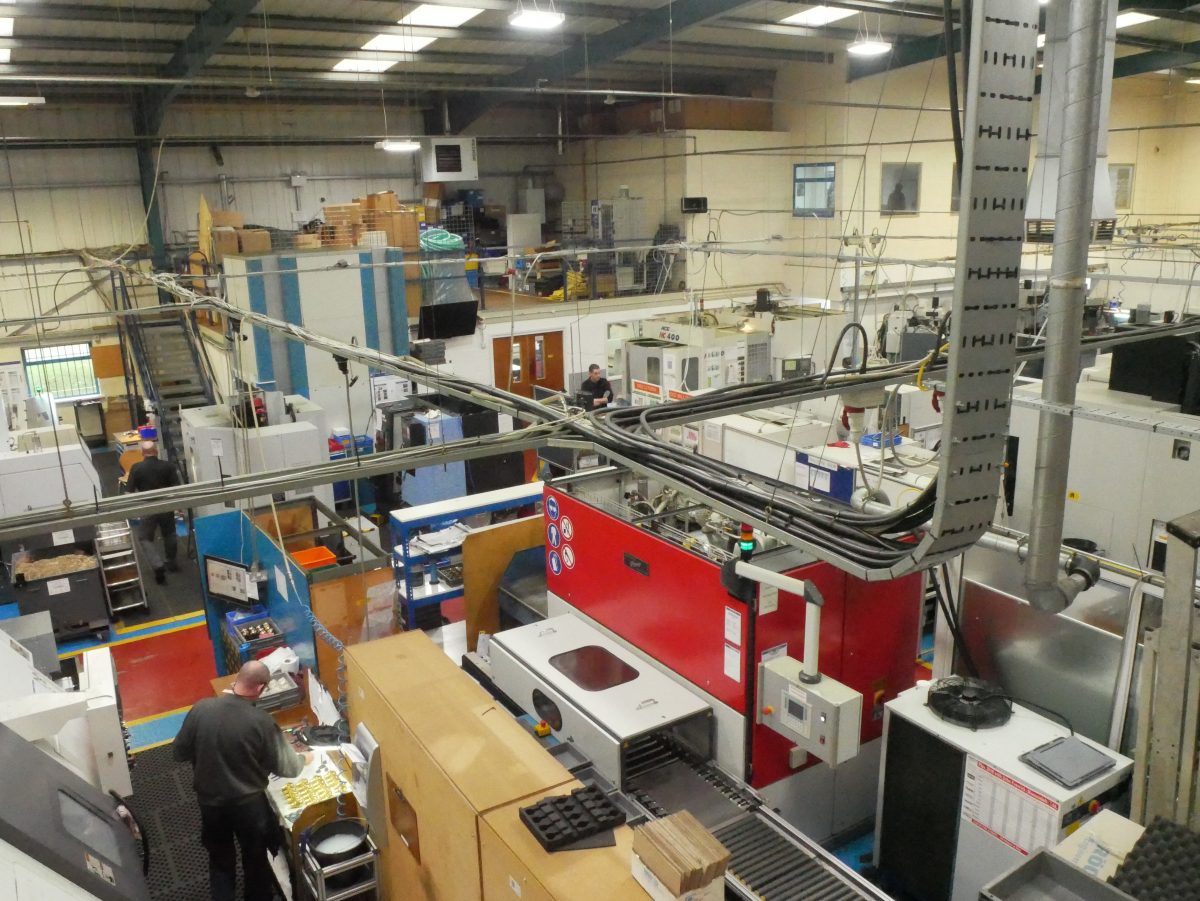
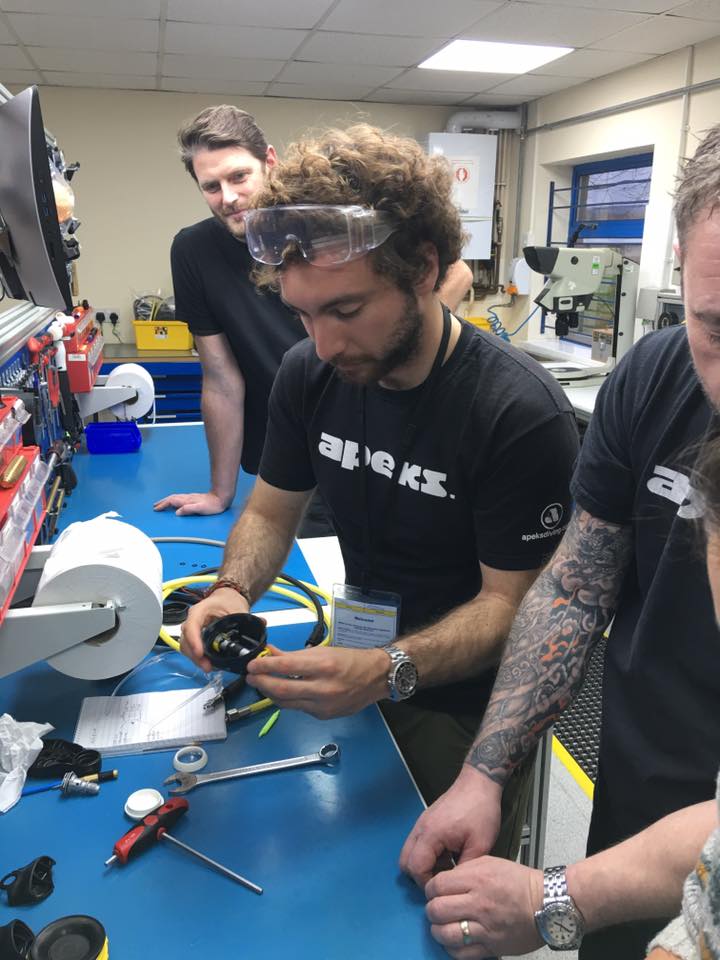
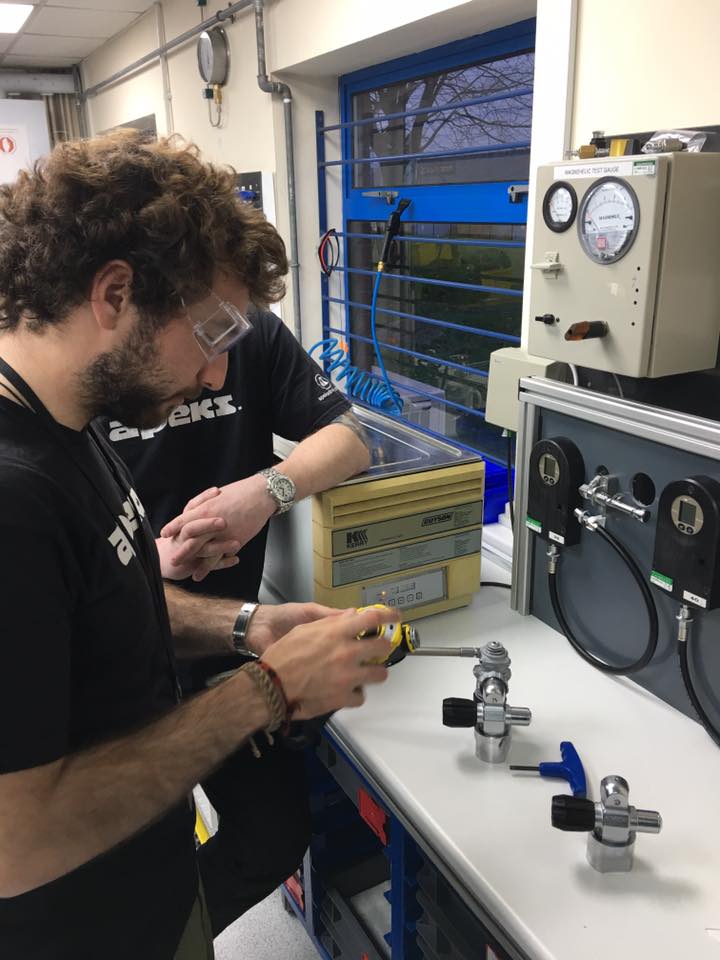


I cannot thank enough APEKS and their staff for their great support in my scholarship year! It would not be possible to be beneath the waves without them and their work!
Royal Geographical Society: EXPLORE 2018, Annual fieldwork and expedition planning weekend
Finally, I made it to London to join the Explore 2018 weekend from the Royal Geographical Society. This was an extraordinary weekend presented by the famous explorer, TV presenter (and many more things) Paul Rose, where many explorers, scientists and artists joined to give different talks and workshops about expedition funding, research outreach, finding the right purpose for an expedition, etc. It was extremely interesting to see how interdisciplinary expeditions are becoming nowadays, where artists, for example, join scientists in the field to document their research so that it can be transmitted to the public from a different perspective. I got extremely inspired by several artists that I talked to and got ideas for the upcoming adventure that I was about to throw myself into.

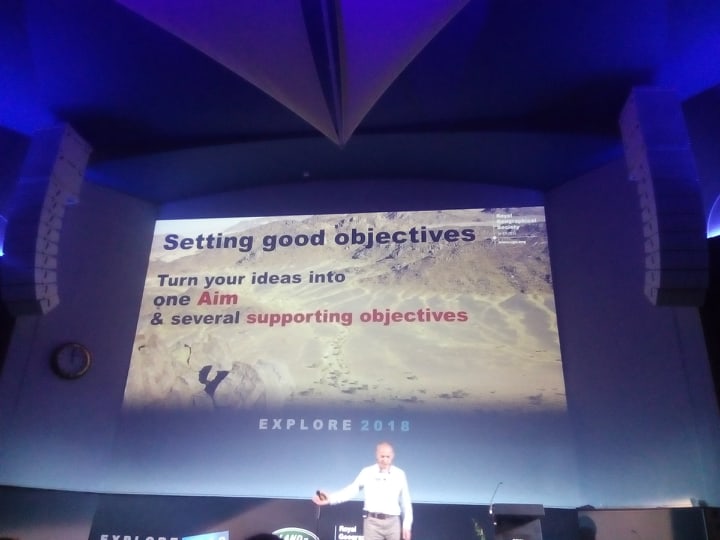

I’m writing these lines right now while packing my bags at home, in Barcelona, before flying to Chile where I’ll join a team from INACH to conduct a scientific diving campaign during the upcoming days off Greenwich Island, in the Antarctic South Shetland Islands. I’ll let you know about the chilly experience soon!
